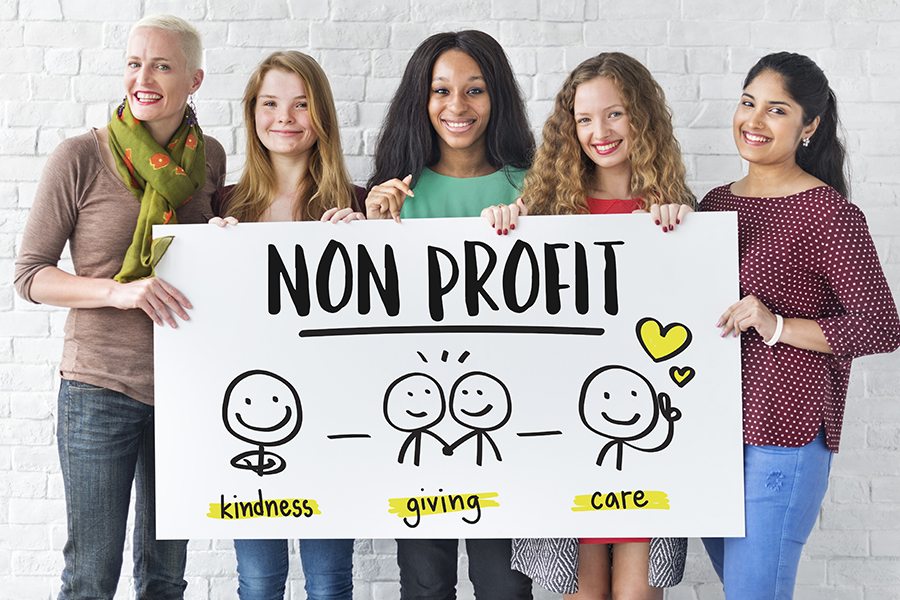Companion with a Nonprofit Company to Improve Your Organization's Success
Wiki Article
The Significance of Partnership and Partnership for a Nonprofit Company in Maximizing Resources and Enhancing Neighborhood Interaction
In the realm of nonprofit firms, partnership and collaboration become vital devices for enhancing resources and cultivating neighborhood engagement. By strategically involving with other organizations, nonprofits can take advantage of shared know-how and financial backing, consequently attending to complex social challenges extra expertly. Moreover, these partnerships not just boost program efficacy however likewise grow a deeper sense of area involvement and possession. Yet, the true capacity of these collective initiatives often stays untapped, increasing questions about how ideal to navigate partnerships for optimum effect and continual success. What elements add to the effectiveness of these collaborations?Benefits of Partnership

Furthermore, cooperation promotes advancement by encouraging the exchange of concepts and best techniques. When organizations function together, they can discover varied perspectives, causing creative remedies that may not arise in isolation. This common analytical strategy can eventually boost service shipment and program outcomes.
Additionally, collective initiatives can enhance neighborhood involvement. When nonprofits partner with each other, they can activate more comprehensive assistance from stakeholders, including volunteers, contributors, and area participants. This cumulative engagement not only boosts presence but also reinforces the reliability of the taking part companies.
Structure Strategic Partnerships
Collaboration among not-for-profit firms frequently causes the development of critical partnerships, which are crucial for taking full advantage of effect and attaining common objectives. These partnerships allow organizations to take advantage of each other's staminas, improving service shipment and increasing outreach. By straightening purposes and objectives, nonprofits can create a synergistic effect that enhances their reach and effectiveness within the community.Building calculated partnerships needs cautious planning and mutual understanding. Developing open lines of communication promotes trust, enabling companions to go over obligations, sources, and expectations transparently.
Additionally, plainly specified duties and obligations are necessary for accountability and success. Formalizing the partnership with created agreements can offer a structure for cooperation, laying out the extent of work, performance metrics, and examination approaches. By cultivating these strategic alliances, nonprofit agencies can improve their capability to attend to area demands, innovate options, and set in motion sources successfully, inevitably leading to a much more lasting and substantial influence in the areas they offer.
Sharing Resources Successfully
Just how can not-for-profit firms optimize their effect with efficient source sharing? By purposefully collaborating with various other companies, nonprofits can boost their functional effectiveness and expand their reach within the area. Resource sharing involves pooling numerous possessions, consisting of monetary resources, personnel, experience, and centers, to address usual objectives better.
Additionally, leveraging each other's strengths can foster development. By exchanging understanding and finest methods, companies can enhance service shipment and develop new services to community challenges. Effective resource sharing likewise cultivates a sense of unity, strengthening the idea that collaboration is vital for accomplishing significant social impact.
Involving the Area
What techniques can not-for-profit companies utilize to properly engage their communities? Most importantly, establishing open lines of interaction is critical. Making use of various systems, such as social media sites, newsletters, and community discussion forums, enables companies to distribute information, obtain comments, and foster dialogue. This two-way interaction not only educates the neighborhood about the firm's objective and tasks however also welcomes input, making area participants feel valued navigate here and entailed.Additionally, creating partnerships with local organizations can boost outreach efforts. nonprofit agency. Teaming up with schools, organizations, and other nonprofits can magnify resources and develop an extra considerable support network, permitting joint campaigns that resonate with area requirements
Furthermore, holding neighborhood events, workshops, and volunteer possibilities can promote deeper interaction. These tasks create a feeling of belonging and urge energetic engagement, enabling individuals to add to the firm's goals while constructing connections with fellow neighborhood members.
Determining Collaborative Success
Evaluating the efficiency of joint initiatives is necessary for not-for-profit firms seeking to optimize their influence. Measuring collective success entails establishing clear, measurable goals and utilizing a range of metrics to analyze performance. Trick indicators might include the number of partnerships developed, resources shared, and the tangible end results achieved with partnership.To efficiently determine success, nonprofits must execute a framework that integrates both measurable and qualitative information. Surveys and interviews can give insights into stakeholder complete satisfaction and the regarded worth of collaborations. Additionally, tracking metrics such as service reach, neighborhood involvement degrees, and monetary efficiency can offer a thorough sight of collective performance.
Routine evaluations must be performed to identify locations of renovation and best methods. This repetitive procedure not only improves liability however also promotes a society of continual knowing within the company - nonprofit agency. By transparently sharing analysis results with stakeholders and companions, try this website nonprofits can build and enhance connections trust
Eventually, measuring joint success enables not-for-profit firms to improve their approaches, allocate resources more efficiently, and reinforce their mission-driven initiatives, causing a higher collective effect on the communities they offer.
Conclusion
.svg)
In the realm of nonprofit firms, partnership and partnership emerge as vital mechanisms for fostering and read here amplifying sources area interaction - nonprofit agency. By fostering these strategic partnerships, nonprofit firms can improve their capacity to resolve area requirements, innovate options, and activate sources successfully, ultimately leading to an extra lasting and significant influence in the neighborhoods they serve
By tactically collaborating with various other companies, nonprofits can enhance their functional efficiency and expand their reach within the community.What approaches can nonprofit firms employ to efficiently involve their neighborhoods?Cooperation and partnership stand as crucial pillars for not-for-profit agencies aiming to make the most of sources and enhance area engagement.
Report this wiki page